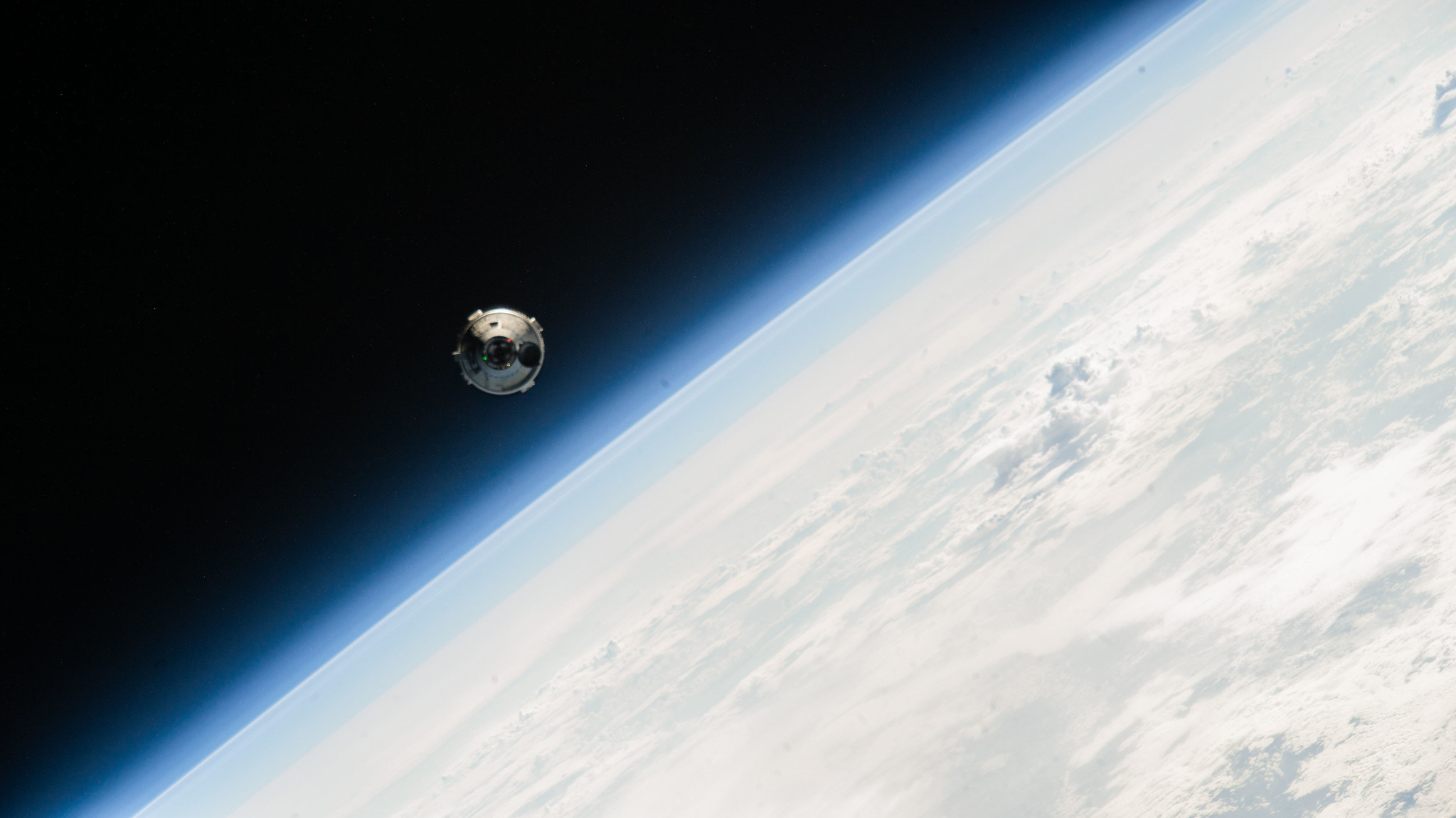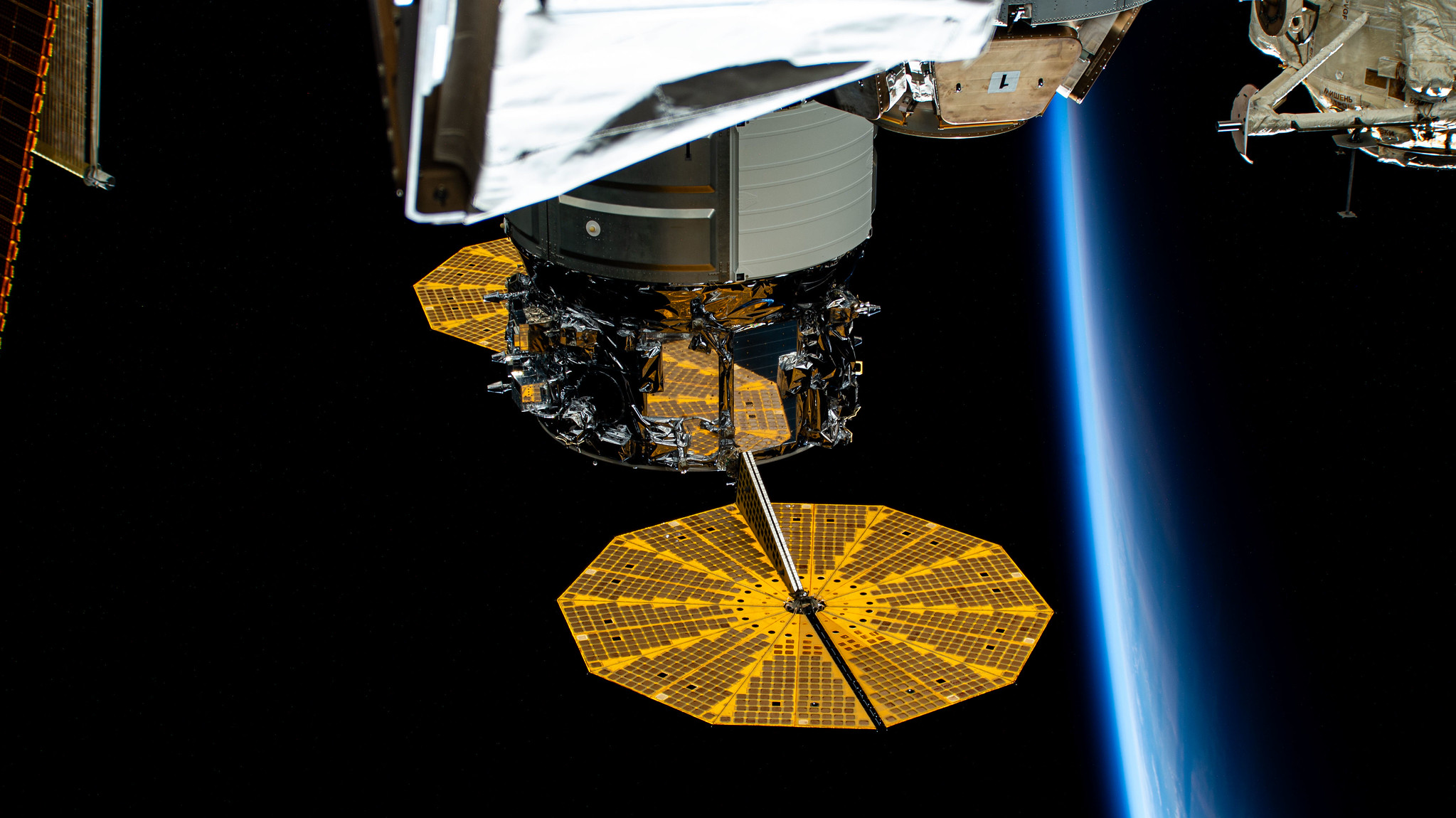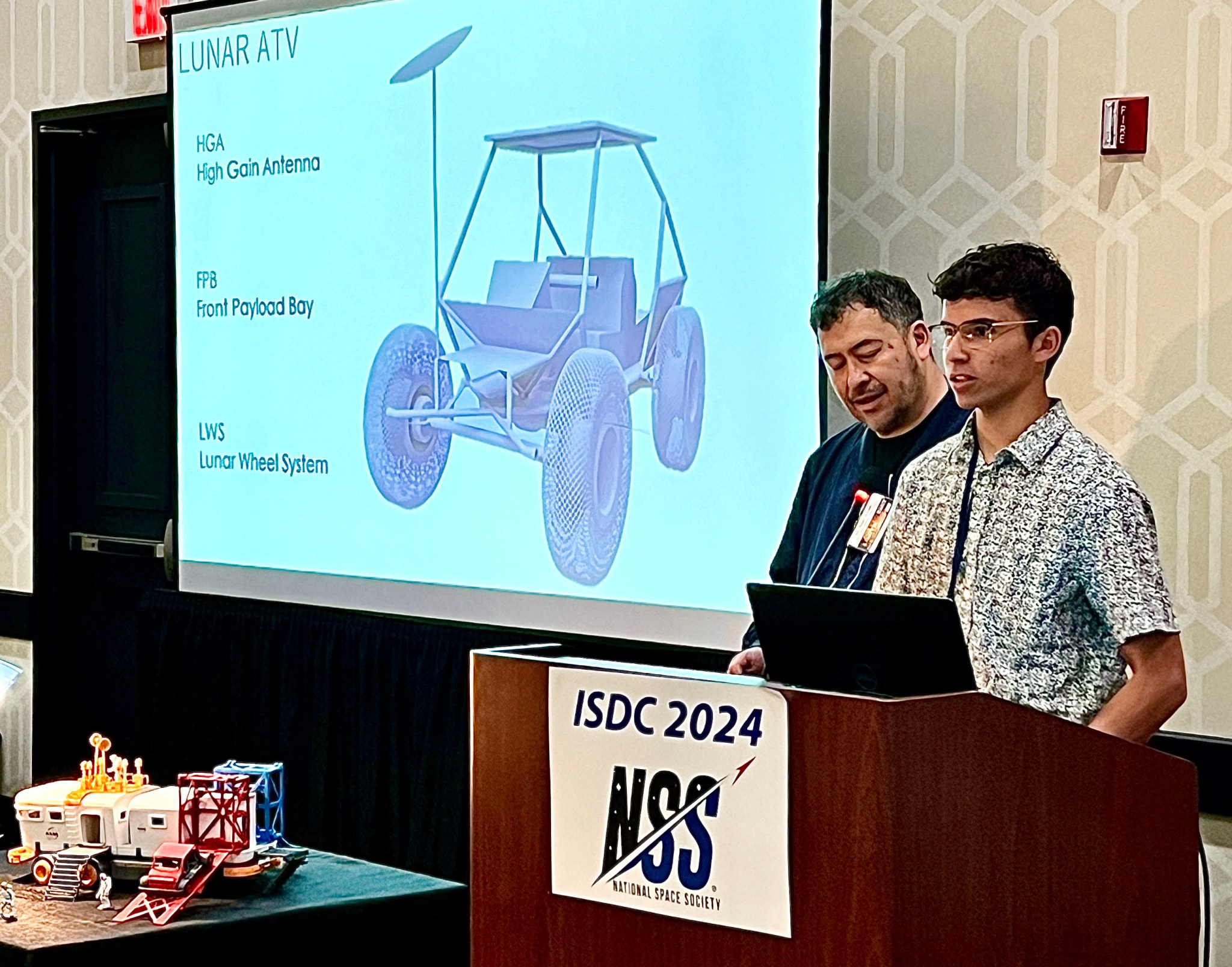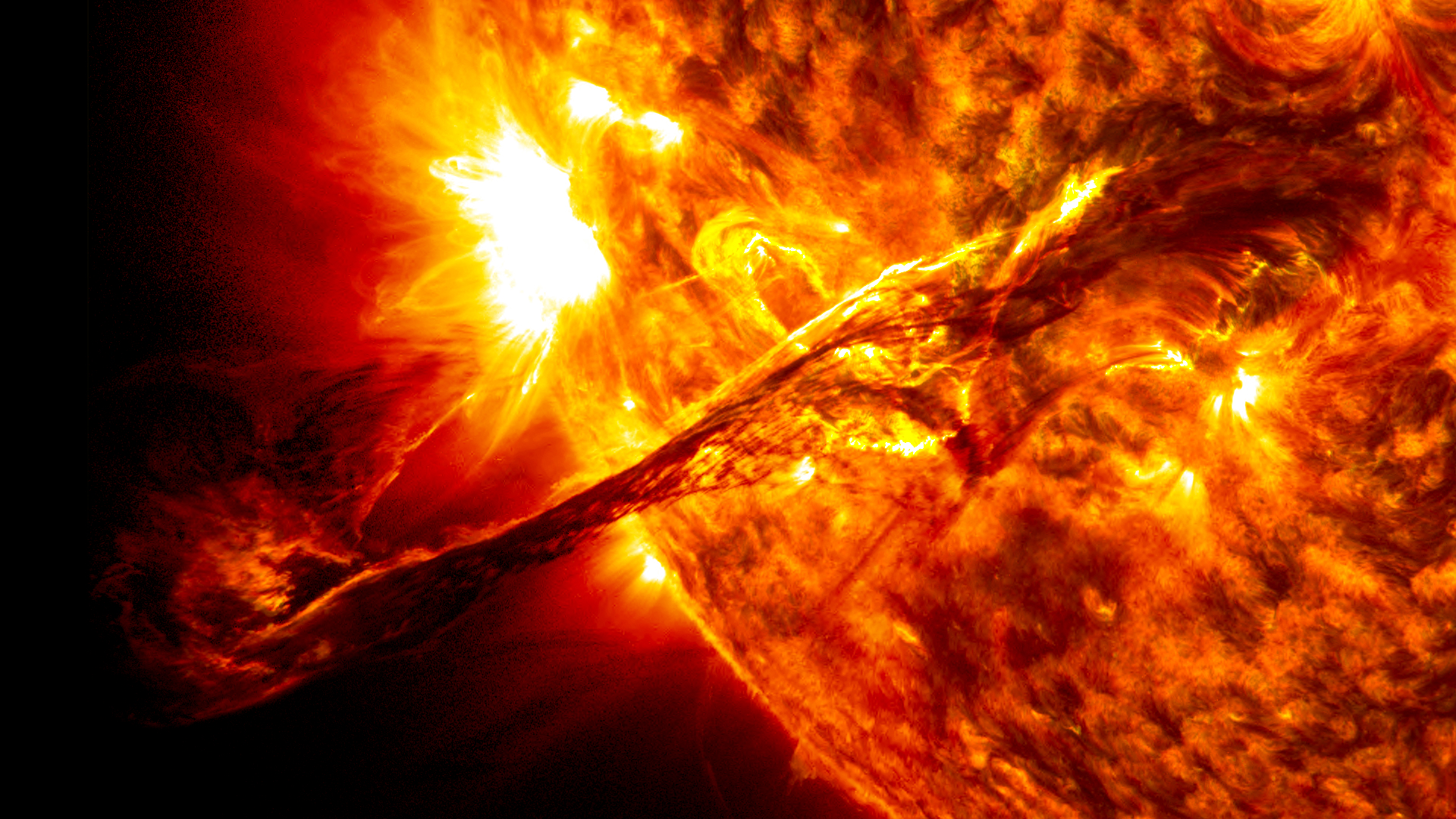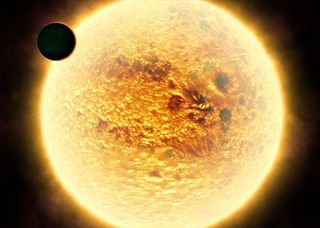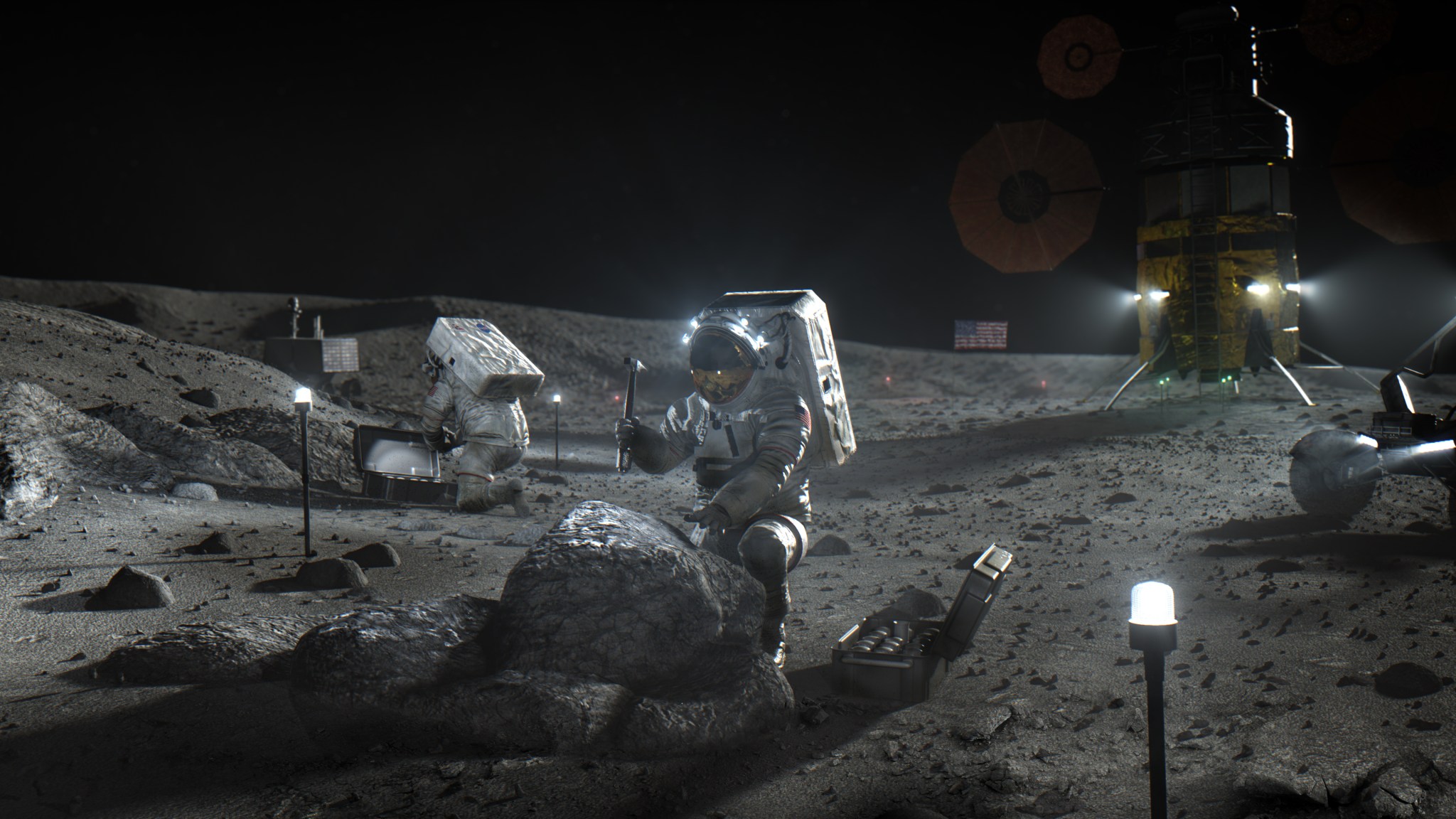Boeing’s Starliner spacecraft, with NASA astronauts Butch Wilmore and Suni Williams aboard, approaches the International Space Station for an autonomous docking as it orbited 257 miles above the South Pacific Ocean. Leadership from NASA and Boeing will participate in a media briefing at 12:30 p.m. EDT Wednesday, July 10, to discuss the agency’s Crew Flight Test at the International Space Station. Audio of the media teleconference will stream live on the agency’s website: https://www.nasa.gov/nasatv Participants include: Steve Stich, manager, NASA’s Commercial Crew Program Mark Nappi, vice president and program manager,…
Read MoreMonth: July 2024
NASA to Cover Northrop Grumman’s 20th Cargo Space Station Departure
Northrop Grumman’s Cygnus spacecraft and the International Space Station above western Mongolia (Credits: NASA). Northrop Grumman’s uncrewed Cygnus spacecraft is scheduled to depart the International Space Station on Friday, July 12, five and a half months after delivering more than 8,200 pounds of supplies, scientific investigations, commercial products, hardware, and other cargo to the orbiting laboratory for NASA and its international partners. This mission was the company’s 20th commercial resupply mission to the space station for NASA. Live coverage of the spacecraft’s departure will begin at 6:30 a.m. EDT on…
Read More30 Years Ago: STS-65 Lifts Off
Space shuttle Columbia heads skyward after clearing the fixed service structure tower at Launch Complex Pad 39A at NASA’s Kennedy Space Center in Florida. Plant life appears in the foreground. Launch occurred at 12:43 pm Eastern Daylight Time (EDT) on July 8, 1994. Once in Earth orbit, STS-65’s six NASA astronauts and a Japanese payload specialist aboard conducted experiments in support of the second International Microgravity Laboratory.
Read MoreNASA’s Neurodiversity Network Interns Speak at National Space Development Conference
2 min read NASA’s Neurodiversity Network Interns Speak at National Space Development Conference Two high school interns funded by NASA’s Neurodiversity Network (N3) presented their work from Summer 2023 at the recent National Space Society (NSS) International Space Development Conference (ISDC-2024), held in Los Angeles, CA (May 23-26, 2024). Both interns were mentored by Dr. Pascal Lee, Planetary Scientist at the SETI Institute and Chair of the Mars Institute, who accompanied them to the conference. Intern Finn Braun, who is now a high school junior, co-authored the paper “An ATV…
Read MoreHurricane Beryl makes landfall as Category 1 hurricane along eastern Texas (video)
The strongest hurricane to occur this early in the year made landfall in Matagorda, Texas, early Monday morning (July 8) at a Category 1 level on the Saffir-Simpson Hurricane Wind Scale. At 4:00 a.m. local time, Hurricane Beryl roared inland with maximum sustained winds of 80 miles per hour (129 kilometers per hour), bringing with it a , dangerous rise in seawater level — up to seven feet (two meters) in some spots along the Gulf coastline in eastern Texas. The storm also brought “considerable” flash and urban flooding inland…
Read MoreHappy Birthday, Meatball! NASA’s Iconic Logo Turns 65
3 min read Preparations for Next Moonwalk Simulations Underway (and Underwater) A painter applies a fresh coat of paint to the NASA “meatball” logo on the north façade of Glenn Research Center’s Flight Research Building, or hangar, in 2006. Credit: NASA/Marvin Smith On July 15, 2024, NASA’s logo is turning 65. The iconic symbol, known affectionately as “the meatball,” was developed at NASA’s Lewis Research Center in Cleveland (now called NASA Glenn). Employee James Modarelli, who started his career at the center as an artist and technical illustrator, was its…
Read MoreNASA Mission to Study Mysteries in the Origin of Solar Radio Waves
3 min read NASA Mission to Study Mysteries in the Origin of Solar Radio Waves NASA’s CubeSat Radio Interferometry Experiment, or CURIE, is scheduled to launch July 9, 2024, to investigate the unresolved origins of radio waves coming from the Sun. CURIE will investigate where solar radio waves originate in coronal mass ejections, like this one seen in 304- and 171-angstrom wavelengths by NASA’s Solar Dynamics Observatory. NASA/Goddard Space Flight Center Scientists first noticed these radio waves decades ago, and over the years they’ve determined the radio waves come from…
Read More‘Star Trek’ legend Jonathan Frakes to direct new series, ‘Arthur C. Clarke’s Venus Prime’
Filmmaker, author, producer and actor Jonathan Frakes is best known for his portrayal of Commander Will Riker in “Star Trek: The Next Generation,” a role he has also played in four “Star Trek” feature films with the acclaimed “TNG” cast. Outside of his co-starring roles in the final frontier, Riker is also an accomplished director, beginning with his dip into filmmaking on “The Next Generation” and continuing with his helming of 1996’s “Star Trek: First Contact” and 1998’s “Star Trek: Insurrection.” Along the way, he has transitioned back to episodic…
Read MoreExtreme ‘hot Jupiter’ exoplanet stinks like rotten eggs and has raging glass storms
Using the James Webb Space Telescope (JWST), astronomers have discovered that one of the closest “hot Jupiter” planets to Earth stinks like rotten eggs. The planet is already infamous for its deadly rains of glass, extreme temperatures, and 5,000 mph (8,046 kph) winds that blow sideways, but this discovery makes this world seem even less friendly. The eggy JWST conclusion results from the discovery of hydrogen sulfide, a molecule that gives off the stench of rotten eggs, in the atmosphere of this extrasolar planet or “exoplanet.” This could tell scientists…
Read MoreNextSTEP Q: CIS Capability Studies III – Lunar User Terminals & Network Orchestration and Management System
NASA’s Artemis missions aim to establish a sustained lunar presence on and around the Moon. Communications and navigation technologies will be critical to enabling the safety, science, and operations of our astronauts and missions. NASA Solicitation Number: NNH16ZCQ001K-1_Appendix-Q-LUTNOMS July 8, 2024 – Solicitation Released Solicitation Overview NASA’s long-term vision to provide for a resilient space and ground communications and navigation infrastructure in which space mission users can seamlessly “roam” between an array of space-based and ground-based networks has been bolstered by innovative studies delivered by industry through the Next Space…
Read More